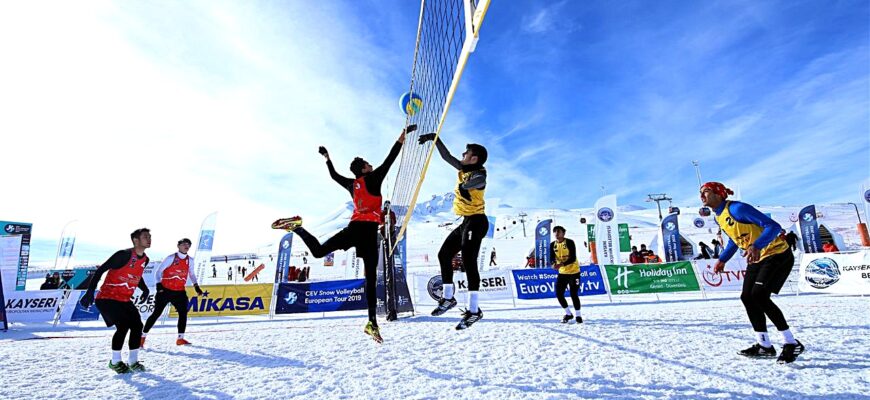While many associate volleyball with sandy beaches or polished indoor courts, a burgeoning variant is carving out its niche on a much colder surface: snow. Snow Volleyball, an exciting and visually distinct sport, is steadily gaining traction, bringing the high-flying action of volleyball to winter landscapes.
Originating in the Austrian Alps, Snow Volleyball has rapidly evolved from an informal pastime among skiers and snowboarders to a structured competitive sport recognized by major governing bodies like the CEV (Confédération Européenne de Volleyball).
Rules and Gameplay on the Powder
At first glance, Snow Volleyball shares core similarities with its beach counterpart: two teams separated by a net, aiming to ground the ball on the opponent`s side. However, the snowy environment introduces key differences. Teams typically consist of three players on court (though variations exist), allowing for greater court coverage in the challenging conditions.
The court size is similar to beach volleyball, measuring 16×8 meters. Matches are typically played in sets, often best of three, with rallies concluding similarly to traditional formats. The primary technical adjustments required are footing and movement; navigating packed snow demands different skills and specialized footwear (often snow boots or cleats) compared to sand or indoor shoes.
The cold weather also adds an unpredictable element. Ball control can be affected by temperature and moisture, and players must contend with the physical demands of playing in low temperatures, sometimes even facing snowfall during matches. It`s a testament to adaptability and sheer willpower.
The Unique Appeal and Growing Momentum
Snow Volleyball offers a spectacular visual experience. Set against stunning mountain backdrops, the sport combines athletic prowess with the beauty of a winter setting. It appeals not only to players seeking a new challenge but also to spectators looking for dynamic sports action in a unique environment.
The sport`s growth has been significantly bolstered by the CEV`s support, leading to the establishment of continental championships and a dedicated tour. This structured approach has professionalized the sport, attracting athletes from indoor and beach volleyball disciplines, eager to test their skills in a different arena. While the sun-kissed tan of beach volleyball is definitely not on offer, the thrill of a perfect block or a powerful spike on the snow provides its own unique reward.
Challenges and the Path Forward
Despite its growing popularity, Snow Volleyball faces challenges common to developing sports. Reliance on specific weather conditions limits its geographical and seasonal reach. Establishing permanent venues and ensuring consistent playing conditions can be difficult and costly. Furthermore, achieving widespread mainstream recognition and securing consistent funding remain ongoing efforts.
Nevertheless, the momentum is positive. The sport`s inclusion in multi-sport winter festivals and the increasing number of national federations recognizing and supporting Snow Volleyball point towards a bright future. The ultimate aspiration for many involved is seeing Snow Volleyball eventually included in the Winter Olympic Games, a goal that would undoubtedly catapult the sport onto the global stage and solidify its place in the winter sports landscape.
Snow Volleyball is more than just volleyball on snow; it`s a distinct athletic pursuit that demands skill, resilience, and a love for winter. As it continues its journey from mountain slopes to international courts, it offers a fresh and exciting perspective on a beloved sport.








